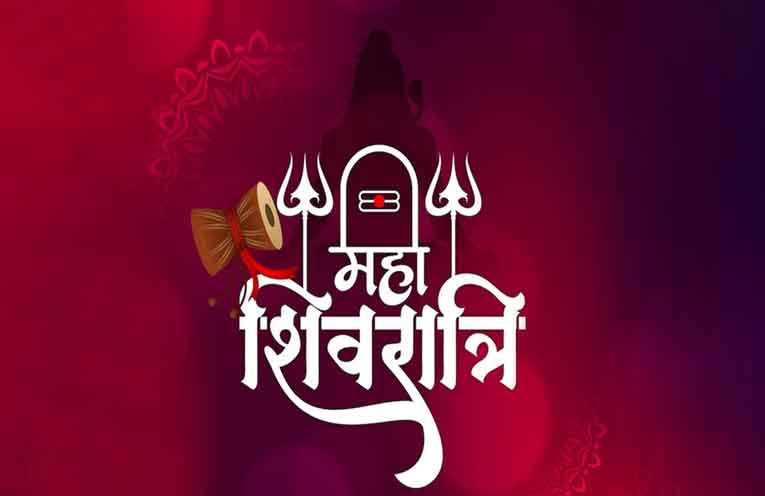
Mahashivratri 2023: Shubh Muhurat, Puja Vidhi, Samagri and all you want to know
This year the festival of Mahashivratri will be celebrated with great grandeur on February 18th. From shubh muhurat to puja rituals, here is all you need to know about the auspicious festival.
Mahashivratri, also known as the “Great Night of Shiva,” is a Hindu festival celebrated annually in honour of Lord Shiva, one of the principal deities in the Hindu pantheon. This auspicious occasion is observed on the 14th day of the dark fortnight of the Hindu month of Phalguna, typically falling in late February or early March. This year the auspicious festival of Mahashivratri will be celebrated with great grandeur on February 18th. Mahashivratri is a night of prayer, fasting, and meditation, as devotees seek the blessings of Lord Shiva for spiritual enlightenment, strength, and guidance.
The festival is marked by elaborate rituals, colorful processions, and joyous celebrations that bring together people of all ages and backgrounds in a spirit of devotion and unity. From shubh muhurat to puja rituals, here is all you need to know about the festival.
Shubh muhurat:
Maha Shivaratri will be celebrated this year on Saturday, February 18. Here are the auspicious timings for Maha Shivaratri according to Drik Panchang:
Nishita Kaal Puja Time: 12:09 AM to 12:00 AM, Feb 19
Maha Shivaratri Parana Time: 6:56 AM to 3:24 PM, Feb 19
The Nishita Kaal Puja Time is the most significant time for performing puja or worship in Hinduism. It is believed to be a very auspicious time and is associated with a high level of spiritual energy.
Ratri First Prahar Puja Time: 06:13 PM to 09:24 PM
Ratri Second Prahar Puja Time: 09:24 PM to 12:35 AM, Feb 19
Ratri Third Prahar Puja Time: 12:35 AM to 03:46 AM, Feb 19
Ratri Fourth Prahar Puja Time: 03:46 AM to 06:56 AM, Feb 19
Chaturdashi Tithi Begins: 08:02 PM on Feb 18, 2023
Chaturdashi Tithi Ends: 04:18 PM on Feb 19, 2023
Puja Samagri:
The items on the list below must be prepared for the puja in order for it to be successful.
- Vermilion: Applying vermilion on Shivalingam after the bath is a sign of virtue.
- Milk, water and bel leaves: Bathing Shivalingam in water, milk, and bel leaves is the epitome of soul purification.
- Fruits: Various fruits are donated during worship symbolize the gratification of wishes and longevity
- Incense sticks: burning incense sticks signify prosperity
- betel leaves: It indicate the satisfaction of earthly desires
- Lamp: lamp lightning represents the acquisition of wisdom and knowledge.
- Vibhuti: Vibhuti which is also known as Bhasm is sacred ash which is made using dried cow dung.
- Other items for the puja inculde flowers, rose water, yogurt, ghee, honey, sugar, water and sandalwood.
Puja vidhi:
Devotees should only eat once the day before Shivratri Vratam, most likely on Trayodashi. According to Drik Panchang, on the day of Shivratri, after completing morning rites, worshippers should make a Sankalp to observe a complete day of fasting on Shivratri and to eat the next day. Devotees should also take a second bath on Shivratri day in the evening before doing Shiva Puja or going to the temple. Shiva Puja must be performed at night, and followers must break their fast the next day after taking a bath.
Shiv mantras:
Lord Shiva is regarded as the God of Mercy and the Destroyer of Evil. The chants of Shiva prayers are frequently seen to be ones that allay fear and strengthen the soul. Panchakshari Shiva Mantra, Rudra Mantra, Rudra Gayatri Mantra and Maha Mrityunjaya Mantra are some of the most popular mantras chanted during Mahashivratri. These five Shiva mantras are believed totransform your life and must be recited during Mahashivratri puja.
(यहां दी गई जानकारियां धार्मिक आस्था और लोक मान्यताओं पर आधारित हैं, इसका कोई भी वैज्ञानिक प्रमाण नहीं है. इसे सामान्य जनरुचि को ध्यान में रखकर यहां प्रस्तुत किया गया है.)
Follow us on : Facebook
Follow us on : Twitter
Follow us on : Instagram
Subscribe us on : Youtube

